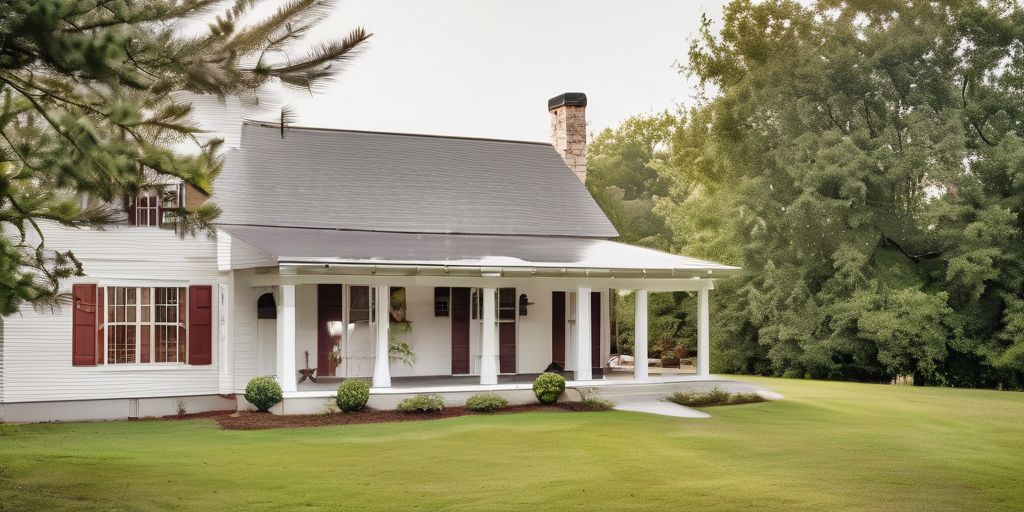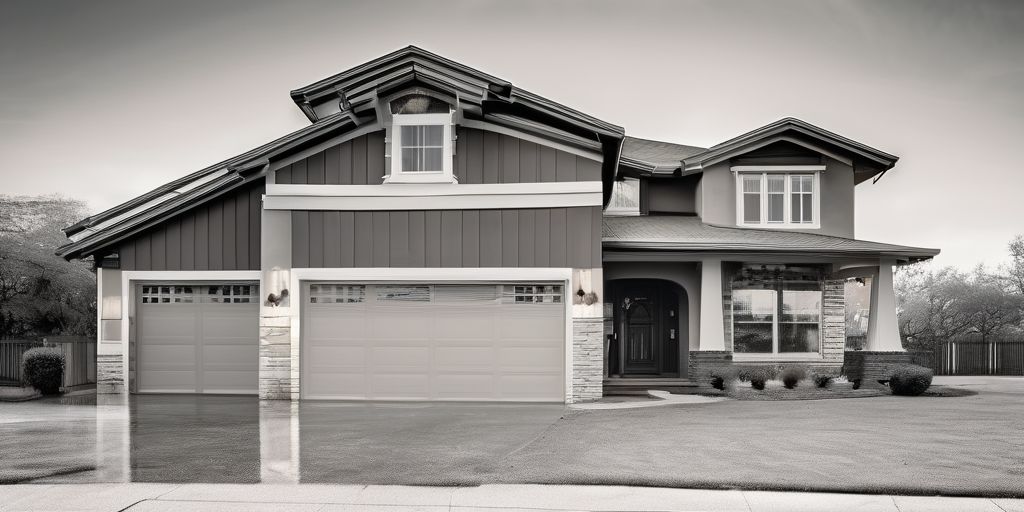Spray painting can be tricky, especially with Mississauga’s changing weather. Knowing the best time to paint can make your projects turn out great. This article will help you understand when to spray paint in Mississauga for the best results.
Key Takeaways
- Mississauga’s climate varies with the seasons, affecting spray painting results.
- Spring and fall offer mild temperatures, making them ideal for spray painting.
- Summer is warm and dry, but high temperatures can affect paint application.
- Always check weather forecasts to avoid rain and wind during your painting projects.
- Using eco-friendly paints and following local regulations helps protect the environment.
Understanding Mississauga’s Climate for Optimal Spray Painting
Spray painting in Mississauga requires a good understanding of the local climate to achieve the best results. The city’s weather can vary greatly throughout the year, impacting the quality and durability of your paint job. Here, we break down the key climate factors to consider for optimal spray painting.
Seasonal Weather Patterns
Mississauga experiences four distinct seasons, each with its own weather patterns.
- Spring: Mild temperatures and moderate humidity make spring a good time for spray painting. However, be prepared for occasional rain showers.
- Summer: Warm and dry conditions are ideal for spray painting, but high temperatures can cause paint to dry too quickly.
- Fall: Cooler temperatures and lower humidity levels make fall another excellent season for spray painting. Watch out for early frost in late fall.
- Winter: Cold temperatures and high humidity can make spray painting challenging. It’s best to avoid outdoor painting during this season.
Temperature and Humidity Considerations
Temperature and humidity play a crucial role in the spray painting process. Proper preparation is essential to ensure a smooth finish. Ideal conditions include:
- Temperatures between 50°F and 85°F
- Humidity levels below 70%
High humidity can cause paint to dry slowly, leading to a sticky finish. Conversely, low humidity and high temperatures can cause the paint to dry too quickly, resulting in a rough texture.
Impact of Wind and Rain
Wind and rain are significant factors to consider when planning a spray painting project.
- Wind: Strong winds can blow dust and debris onto wet paint, ruining the finish. It’s best to choose a calm day for spray painting.
- Rain: Rain can wash away wet paint and cause streaks. Always check the weather forecast and avoid painting on rainy days.
For those living near Lake Ontario, the lake effect can bring sudden weather changes, so always be prepared for unexpected conditions.
By understanding these climate factors, you can better plan your spray painting projects and achieve a polished finish.
Best Seasons for Spray Painting in Mississauga
Spray painting in Mississauga can be a rewarding task if done during the right season. Each season offers unique advantages and challenges for an exterior painter. Here’s a breakdown of the best seasons for spray painting in Mississauga.
Spring: A Fresh Start
Spring is an excellent time to start spray painting projects. The weather is mild, and the humidity levels are generally moderate. This season provides a fresh start after the cold winter months.
- Mild Temperatures: Ideal for paint adhesion and drying.
- Moderate Humidity: Helps in achieving a smooth finish.
- Blooming Boulevards: Enjoy the beauty of places like Spruce Park while working.
Summer: Warm and Dry
Summer is another great season for spray painting. The warm and dry conditions are perfect for quick drying times and excellent paint adhesion.
- Warm Temperatures: Ensure that the paint dries quickly.
- Low Humidity: Reduces the risk of paint bubbling or peeling.
- Longer Days: More daylight hours to complete your projects.
Fall: Crisp and Clear
Fall offers crisp and clear weather, making it a favorable time for spray painting. The cooler temperatures and lower humidity levels are ideal for a smooth finish.
- Cooler Temperatures: Prevents paint from drying too quickly.
- Low Humidity: Ensures a flawless finish.
- Scenic Views: Enjoy the fall foliage in areas like Lakeshore Boulevard while working.
Choosing the right season for spray painting can significantly impact the quality and longevity of your project. Always consider the local weather patterns and plan accordingly.
By timing your spray painting activities according to Mississauga’s climate, you can achieve the best results and ensure your projects stand the test of time.
Preparing for Weather Changes During Spray Painting
When spray painting in Mississauga, it’s crucial to be ready for sudden weather changes. This ensures your project goes smoothly and the paint adheres properly. Here are some tips to help you prepare for unexpected weather conditions.
Monitoring Weather Forecasts
- Check the weather forecast regularly to avoid surprises.
- Use weather apps or websites for up-to-date information.
- Pay attention to temperature, humidity, and wind speed.
Protective Measures Against Sudden Rain
- Always have drop cloths or plastic sheeting on hand to cover your work area quickly.
- Set up a temporary shelter or canopy to protect your project from rain.
- Keep your tools and paint supplies in waterproof containers.
Handling Unexpected Temperature Drops
- Be aware that sudden temperature drops can affect paint drying times and adhesion.
- Use heaters or heat lamps to maintain a stable temperature if needed.
- Plan your painting schedule to avoid the coldest parts of the day.
Pro Tip: If you’re near a landmark like the Credit River, be extra cautious of sudden weather changes due to the proximity to water.
By following these steps, you can ensure a successful spray painting project, even when the weather is unpredictable.
Environmental Considerations for Spray Painting
Eco-Friendly Paint Options
Choosing eco-friendly paint options is essential for reducing environmental impact. These paints typically have lower levels of volatile organic compounds (VOCs), which helps in minimizing air pollution. Opting for water-based paints can also be a good choice as they are less harmful to both the environment and human health.
Minimizing Emissions
To minimize emissions during spray painting, consider the following steps:
- Use high-efficiency spray guns to reduce overspray.
- Implement proper ventilation systems to capture and filter out harmful particles.
- Schedule painting activities during low-wind conditions to prevent the spread of paint particles.
Disposal of Paint Waste
Proper disposal of paint waste is crucial to avoid environmental contamination. Follow these guidelines:
- Collect and store leftover paint in sealed containers.
- Take unused paint to local hazardous waste disposal facilities.
- Clean spray equipment in designated wash stations to prevent chemicals from entering the water system.
Mississauga’s Rattray Marsh Conservation Area is a beautiful natural landmark that reminds us of the importance of protecting our environment.
By adhering to these practices, you can ensure that your spray painting activities are both effective and environmentally responsible.
Safety Tips for Spray Painting in Various Weather Conditions
Spray painting in Mississauga can be tricky due to the changing weather. Here are some safety tips to help you navigate different conditions.
Heat-Related Precautions
When spray painting in hot weather, it’s important to:
- Stay hydrated: Drink plenty of water to avoid dehydration.
- Take breaks: Rest in the shade to cool down.
- Use sun protection: Wear a hat and sunscreen to protect your skin.
Cold Weather Safety Measures
Spray painting in cold weather requires special care:
- Keep paint warm: Store paint in a warm place to maintain its consistency.
- Dress in layers: Wear warm clothing to stay comfortable.
- Check the forecast: Avoid painting if temperatures are too low.
Wind and Dust Control
Wind and dust can ruin a spray painting project. To manage these elements:
- Use windbreaks: Set up barriers to block the wind.
- Clean the area: Remove dust and debris before starting.
- Spray close to the surface: This helps to minimize the impact of wind.
Tip: Always monitor the weather forecast to avoid unexpected changes that could affect your painting project.
By following these tips, you can ensure a safer and more effective spray painting experience in Mississauga.
Community Guidelines and Regulations in Mississauga
When planning spray painting activities in Mississauga, it’s essential to be aware of the community guidelines and regulations. These rules ensure that painting projects are conducted safely and responsibly, minimizing any negative impact on the environment and the community.
Local Environmental Laws
Mississauga has specific environmental laws that govern spray painting activities. These laws are designed to protect the environment and public health. Key points include:
- Proper ventilation: Ensure that the area is well-ventilated to prevent the buildup of harmful fumes.
- Use of eco-friendly paints: Opt for paints that have low levels of volatile organic compounds (VOCs).
- Waste disposal: Dispose of paint waste according to local regulations to avoid contamination.
Permits and Approvals
Before starting any spray painting project, you may need to obtain permits and approvals from the local authorities. This ensures that your project complies with all relevant regulations. Steps to follow include:
- Check if your project requires a permit.
- Submit the necessary applications and documents.
- Wait for approval before commencing work.
Community Engagement and Feedback
Engaging with the community is crucial when planning spray painting activities. This helps in addressing any concerns and ensures that the project is well-received. Consider the following:
- Informing neighbors: Let your neighbors know about the project in advance.
- Addressing concerns: Be open to feedback and address any concerns promptly.
- Scheduling: Plan your activities to minimize disruption to the community.
Proper planning and community engagement can lead to a successful and well-received spray painting project.
By following these guidelines and regulations, you can ensure that your spray painting activities are conducted responsibly and in harmony with the community.
Mississauga has specific community guidelines and regulations that everyone should follow to keep our neighborhoods safe and pleasant. Whether you’re a resident or a visitor, it’s important to stay informed about these rules. For more details on how you can contribute to a better community, visit our website today!
Conclusion
In Mississauga, timing your spray painting projects with the local climate is key to achieving the best results. By understanding the weather patterns and planning accordingly, you can ensure that your paint job not only looks great but also lasts longer. Remember, the right temperature and humidity levels can make a big difference. So, keep an eye on the forecast, choose the optimal days, and happy painting!
Frequently Asked Questions
When is the best time of year to spray paint in Mississauga?
The best times for spray painting in Mississauga are during the spring, summer, and fall. These seasons generally offer the most favorable weather conditions, such as milder temperatures and lower humidity levels.
How does temperature affect spray painting?
Temperature plays a crucial role in spray painting. If it’s too cold, the paint may not dry properly. If it’s too hot, the paint can dry too quickly, causing it to crack or peel. It’s best to aim for a temperature range between 50°F and 85°F.
Can I spray paint if it’s windy outside?
Spray painting in windy conditions is not recommended. Wind can blow dust and debris onto the wet paint, ruining the finish. It can also cause the paint to drift, making it difficult to achieve an even coat.
What should I do if it starts raining while I’m spray painting?
If it starts to rain while you’re spray painting, stop immediately and cover the painted area with a tarp or plastic sheeting. Wait for the weather to clear up before resuming your project.
Are there eco-friendly spray paints available?
Yes, there are eco-friendly spray paints available that have lower levels of volatile organic compounds (VOCs). These paints are better for the environment and safer for your health.
Do I need a permit to spray paint in Mississauga?
In some cases, you may need a permit to spray paint, especially for large projects or if you’re working in a public area. It’s best to check with the local authorities to make sure you’re in compliance with any regulations.






